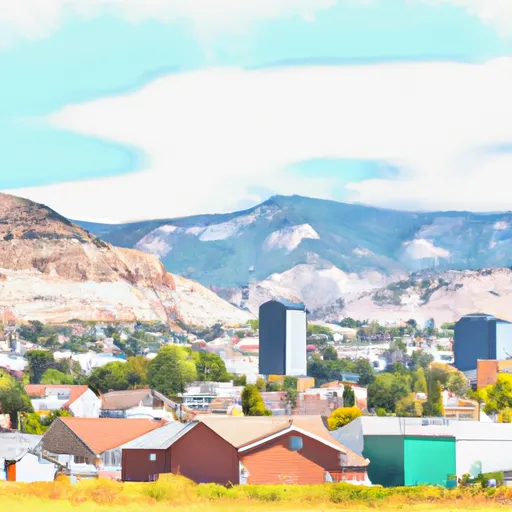-
 Snoflo Premium
Snoflo Premium
Get unlimited access to all our content
With no Ad interruptions! - Start Your Free Trial Login with existing account
Emery
Eden Index
Climate
7.8
•
Recreation
2.5
•
Community
•
Safeguard
4.0/10

Emery is a small town located in central Utah, known for its hot summers and cold winters. The climate is semi-arid, with low humidity and moderate precipitation. The main hydrology constituent is the San Rafael River, which runs through the town and provides irrigation for local agriculture. Outdoor recreation opportunities in the area include hiking, camping, fishing, and hunting in the nearby San Rafael Swell and Manti-La Sal National Forest. The town also has a golf course, basketball courts, and parks for family activities. Visitors can explore the local history at the John Wesley Powell Museum, which features exhibits on the area's geology, archaeology, and pioneer heritage.
What is the Eden Index?
The Snoflo Eden Index serves as a comprehensive rating system for regions, evaluating their desirability through a holistic assessment of climate health, outdoor recreation opportunities, and natural disaster risk, acknowledging the profound impact of these factors on livability and well-being.
Climate Health Indicator (CHI): 7.8
Emery receives approximately
221mm of rain per year,
with humidity levels near 60%
and air temperatures averaging around
9°C.
Emery has a plant hardyness factor of
6, meaning
plants and agriculture in this region thrive during a short period during spring and early summer. Most
plants will die off during the colder winter months.
By considering the ideal temperature range, reliable water supplies, clean air, and stable seasonal rain or snowpacks, the Climate Health Indicator (CHI) underscores the significance of a healthy climate as the foundation for quality living.
A healthy climate is paramount for ensuring a high quality of life and livability in a region, fostering both physical well-being and environmental harmony. This can be characterized by ideal temperatures, reliable access to water supplies, clean air, and consistent seasonal rain or snowpacks.
Weather Forecast
Streamflow Conditions
Upper Colorado-Dirty Devil
Area Rivers
Upper Colorado-Dirty Devil
Snowpack Depths
Upper Colorado-Dirty Devil
Reservoir Storage Capacity
Upper Colorado-Dirty Devil
Groundwater Levels
Recreational Opportunity Index (ROI): 2.5
The Recreational Opportunity Index (ROI) recognizes the value of outdoor recreational options, such as parks, hiking trails, camping sites, and fishing spots, while acknowledging that climate plays a pivotal role in ensuring the comfort and consistency of these experiences.
Access to outdoor recreational opportunities, encompassing activities such as parks, hiking, camping, and fishing, is crucial for overall well-being, and the climate plays a pivotal role in enabling and enhancing these experiences, ensuring that individuals can engage in nature-based activities comfortably and consistently.
Camping Areas
| Campground | Campsites | Reservations | Toilets | Showers | Elevation |
|---|---|---|---|---|---|
| Mix Pad Dispersed | None | 4,643 ft | |||
| Potters Pond | 19 | 9,022 ft | |||
| Cathedral Valley - Capitol Reef National Park | 6 | 6,923 ft | |||
| Bear Creek | 29 | 6,585 ft | |||
| Joes Valley - Seely | 48 | 7,109 ft | |||
| Millsite State Park | 22 | 6,220 ft |
Nearby Ski Areas
Catastrophe Safeguard Index (CSI):
The Catastrophe Safeguard Index (CSI) recognizes that natural disaster risk, encompassing floods, fires, hurricanes, and tornadoes, can drastically affect safety and the overall appeal of an area.
The level of natural disaster risk in a region significantly affects safety and the overall livability, with climate change amplifying these risks by potentially increasing the frequency and intensity of events like floods, fires, hurricanes, and tornadoes, thereby posing substantial challenges to community resilience and well-being.
Community Resilience Indicator (CRI):
The Community Resilience Indicator (CRI) recognizes that education, healthcare, and socioeconomics are crucial to the well-being of a region. The CRI acknowledges the profound impact of these elements on residents' overall quality of life. By evaluating educational resources, healthcare accessibility, and economic inclusivity, the index captures the essential aspects that contribute to a thriving community, fostering resident satisfaction, equity, and social cohesion.

